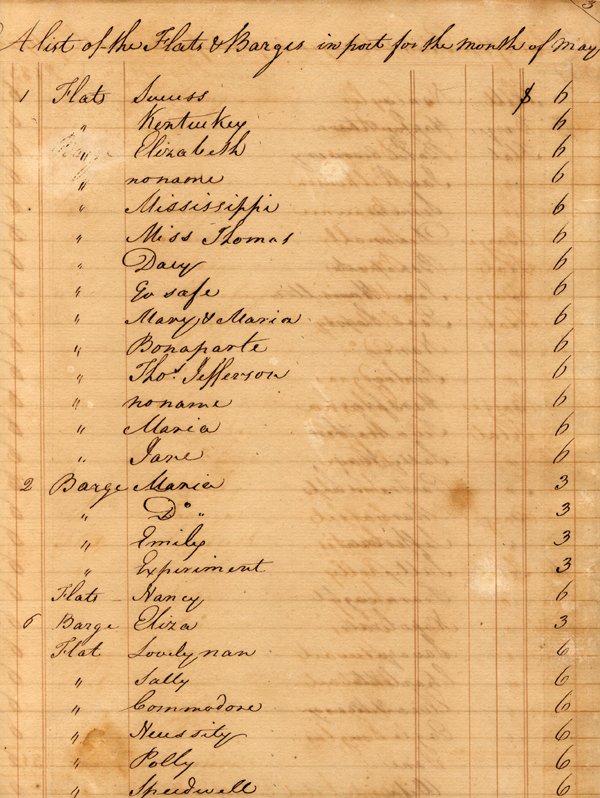
| ||
| Return to Table of Contents Go to Page [1] [2] [3] [4] [5] [6] [7] [8] [9] [10] [11] [12] [13] [14] [15] [16] [17] [18] [19] [20] [21] [22] [23] [24] [25] [26] [27] [28] [29] [30] [31] [32] [33] [34] [35] [36] [37] [38] [39] [40] [41] [42] [43] [44] [45] [46] [47] [48] [49] [50] [51] | ||
PAGE 29
| In 1806, the Conseil de Ville passed an
ordinance requiring the Collector of Levee Dues to keep a record of flatboats, barges, rafts, and other crafts
arriving in the Port of New Orleans. This page shows one page of the list of crafts that docked during the
month of May, 1806 (a total of 123 vessels arrived that month – not counting ships, which were recorded
separately). Note the two barges named the Bonaparte and the Thomas Jefferson, an unintentional, but
interesting, comment on the changing times in Louisiana.
|
After the Louisiana Purchase and the lifting of many inland trade restrictions imposed by the Spanish and
French, business in the port surged. In 1803 hundreds of barges, flatboats and keelboats, loaded with such
commodities as flour, pork, lard, tallow, whiskey and corn, reached New Orleans from Pennsylvania, Ohio,
Kentucky and elsewhere upriver. By the end of the decade, thousands arrived annually, particularly in the
late fall and spring. 
|